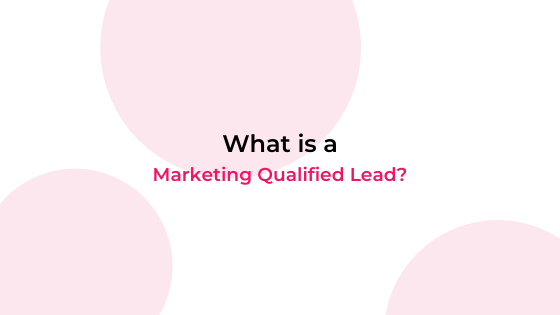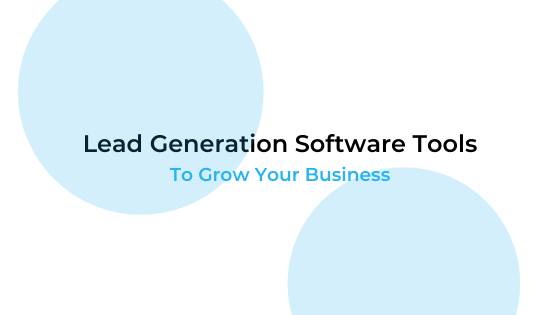Direct mail marketing is a traditional form of awareness and visibility for your business, created using a posting mail service.
It involves the production of customised, promotional packages or notices, used as a marketing material to instigate further business development by outreaching to a targeted list of specific, potential targets, addressed directly to the most relevant decision-maker or influential personnel.
It is a platform to integrate a creative twist and it can act as a productive lead generator with a strong return on investment.
Click Here to access Your Very Own Direct Mail Marketing Planner
Is direct mail marketing still relevant?
Despite the advancements of digital marketing and the wide variety of available tools and technology which we all have at our disposal, direct mail marketing is still an option which can compete with more modern marketing solutions such as email, varieties of advertising, social media, influencer marketing, PR and content.
But It is a strategy that can still be enhanced by combining the more traditional marketing technique with a digital flavor for maximization of resources and results.
What are the benefits of direct mail marketing?
Personalisation
The value of a personal approach can never be underestimated across any form of marketing and direct mail creates the ideal platform to deliver a perfect, personalised message, triggering a full-range of emotive reactions.
People tend to respond better and more considerately to a human-factor.
Something which is real, non-automated and has taken genuine effort and thought.
You can capture this with your direct mail send-out.
This will be appreciated more than a spam item in which someone considers themselves as just one of many.
Accuracy
The minimum requirement for successful marketing of anything is that it gets seen.
Without something being seen, nothing progressive can take effect, regardless of how clever, interesting or valuable it is.
The majority of people will check their post.
That is something which is a pretty standard procedure. If something is addressed to you, out of pure intrigue and necessity of it being something of importance, you will open it and digest it in some way, shape or form – even if it might not be immediate.
Therefore, direct mail marketing offers a reliable and more secure visibility conversion compared to some alternative marketing approaches which you can’t guarantee have been acknowledged.
Ultimately minimising the chances that your expanded efforts could be a waste of time and non-sustainable.
Clarity
Alternative, larger-scale marketing can often flatter to deceive by providing ambiguous vanity statistics offering a consensus that you may be reaching vast numbers of people (impressions, open rate etc).
However, the majority of those can’t be justified as relevant or tangible, being that they are not converting into anything of real value.
Direct mail provides the opposite to this.
With more control of the outreach and a clear picture of pre-prepared recipients and their responses to your attempts to entice them with tracking and follow-up procedures.
Do Not Use In Isolation
In all cases, marketing efforts never succeed in isolation.
It is about exploiting the wide range of options available to you, however, balancing them so that you are not putting more time into your least effective methods, yet still allowing them to tick over for long-term effectiveness.
No marketing platform, until 100% qualified, should be ultimately dismissed.
But extended efforts into methods that prevent you from working on proven ones are a broken formula.
Direct mail marketing may come at a higher, more immediate expense and on a less-practical, smaller-scale to other approaches (due to promotional creation, printing, postage costs, and manual implementation).
However, these inconveniences can be outweighed by the personal, targeted, detailed, and direct approach in terms of positive ROI.
How to implement a direct mail campaign
Click Here to access Your Very Own Direct Mail Marketing Planner
Setting Goals
Before any direct mail marketing campaign, you must initially decide what is the end goal which you want to achieve from the overall project in terms of a recorded, physical response and/or alternative metrics:
- Awareness;
- Traffic;
- Social following
- Event attendance;
- Lead generation;
- Demonstrations;
- Sales;
- Etc.
You need to consider the ideal scenario and minimum requirement for the end results which you consider important/relevant for the campaign to be regarded as a success.
Discuss these as a team and record the expectations for later reference.
Budget
It is important to consider your budget allowance for the project and this will reflect your realistic, overall target and end goal.
You also must take into account the profit margin of one sale for your business and the lifetime of that customer acquisition.
Or alternatively, the longer-term value of non-definitive awareness and what is that worth to your business and brand going forward.
- How many sales are needed to break even from your send-out?
- Or how important it is to get your name noticed in the saturation of your market?
- How big is your target pool?
Do you want to test the water to some extent before committing heavy financial investment into a full-project.
You can then manage your expectations realistically and construct your outreach around these figures.
Identify Your Ideal Customer
This is a crucial stage of your direct mail marketing campaign and without complete research and analysis, your whole project will be overall less-effective and an in-balance of effort and resources.
In simplistic terms, if you do not identify accurately who your ideal customer is, then you are not going to convert successfully as you will approach the wrong people.
It is this research being performed correctly which will provide the advanced ROI from the project.
Unlike some other forms of wider-scale marketing, the specific, detailed effort which is going into these deliveries is far more than what would be for scheduling an email, so-to-say.
Therefore, there is more relative ‘risk’ on each send-out as it creates a higher cost-per-acquisition.
There is no need to over-complicate this procedure, all you are doing is finding people who fit the criteria of needing what you provide.
Breaking this down by taking into account a range of demographic factors to reveal as close as possible, the perfect identity in an ideal scenario.
Keep reading: How to get to know your ICP (Ideal Customer Profile)?
Creating Your Outreach list
You can then gain access to pre-made lists of certain industries or job types.
Obtain the data and clean it manually, according to your ideal customer match, using LinkedIn for reference.
Create a spreadsheet with the breakdown where you can mark the responding targets.
This will be a longer process but will enhance your results in the end and prevent you wasting money on resources which could be channelled more accordingly.
Remember, it is not a short-term fix, you are using a trial and error approach until you get it perfect and this takes time.
Constructing The Direct Mail Packages
What business message are you presenting in your conversation to the prospects – what do you want them to know about:
- A Product (feature) launch,
- Unique offer,
- A discount code,
- Free trial period,
- Demonstration invite,
- Partnership opportunity,
- Free sample,
- Event invite,
- Thank you message
- Reminder
What direction do you want to take people in from receiving the mail:
- In-store,
- Specific web page,
- Phone-line,
- Social media
- Event attendance
- Longer-term psychological awareness
Mail creation:
- Image/branding – ensure clear and presentable logo implementation for obvious identity
- Colour scheme – be sure to keep in-line with your brand colours for full effect
- Message visibility – you have gone to a lot of effort, make sure that your message is not hidden and is easily accessible
- Memorable moment – be creative with your mail, you can send anything you want to grab attention. Use technology or special effects to make a memorable marketing moment
- Packaging originality – you can add more intrigue to your parcel by decorating it in a way which makes sure it is opened on arrival
Split Testing:
If you have multiple ideas for the design and message of your package, or if you have a wide range of ideal customer profiles, then split-testing is a good idea to guide the process.
Split your data into fair divisions and apply a set to each strategy.
Monitor the results of the feedback from each and come back to the table to apply a finished mail send-out for the ongoing targets.
Following up on your direct mail attempt
In a perfect world, your targets will automatically respond to your efforts in the way which you have directed them to.
Be that with your call to action: call us, check out, here is the link, follow us here, sign up now etc.
But in all honesty, the people and businesses which you prospect are going to be extremely busy and at different stages of their progression and down-time.
It will take days, weeks and months for many genuinely interested parties to respond and it will be the case for so many that it is simply bad timing and they are too involved in other projects themselves at that point.
No matter how appealing your package is, it is impossible that everyone will; come across it, digest it, or react to it immediately.
Maybe not even for a considerable time period.
That is not to say they are not interested, but other priorities take precedence. A nudge in the right direction from the initial point of contact is required.
Essentially, you are heating up a lead.
Giving yourself a foot in the door and an initial awareness to follow-up with.
How long to wait until you reach out will vary for each individual project, as there are different levels of content intensity to get through.
For event attendance, it will need to be more instant and compliant with the deadline.
Ways to follow up on your direct mail
Create an overall prospecting attack, built around your direct mail send-out as the catalyst in the following steps:
Social
This can be an accessible, less direct way of reaching your target and converting them.
With the initial awareness in mind, seeing a notification on a social platform such as; a follow, like, mention, add or connection opportunity, can be a way to remind and direct them in the secondary funnel of the pipeline.
By dropping an email to the recipient, you can remind them of the proposition and allow them to respond in a convenient way or offer contextual value to their thought process – ie “Not interested, thanks”, “Just too busy right now”, “No budget for this”, “Will keep you on record for later”, “Have a current provider, contact me in 6 months”.
This can give direction or closure to your results.
Calling
If there is still no response, the lead can be passed on to the sales team to pick up the phone.
Cold calling can be a tough environment to get your message across.
However, now you have a self-assisted reason to be calling, it is no longer ‘cold’ and may be better received by the gatekeeper.




